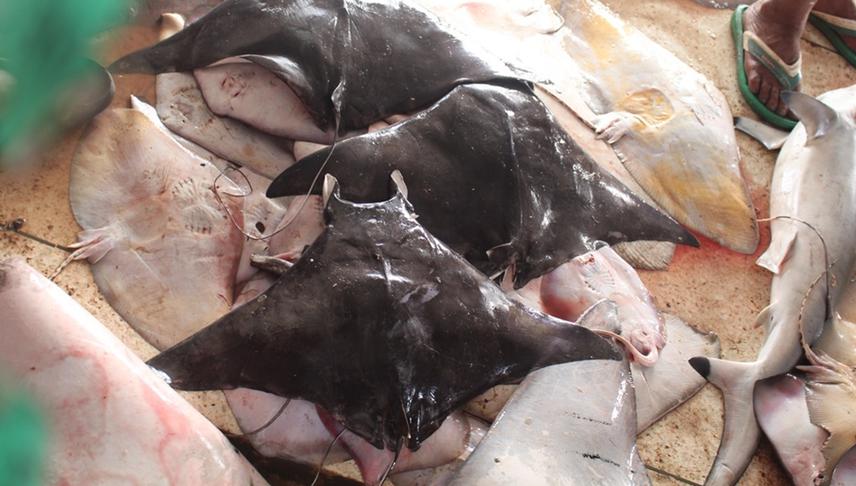Alifa Bintha Haque
Prevent the extinction of threatened sharks and rays by providing rigorous information to managers on trade chains and illegal trade hotspots. The purpose of this project is to increase our understanding of national and international trade chains, including the actors involved, and community dependence on shark and ray fisheries in Bangladesh with a special emphasis on sawfish, guitarfish and Devil rays; the most unrepresented marine mega fauna in the conservation scenario of Bangladesh.

Illegal trade on shark products is the biggest challenge of shark conservation in the world. Globally one quarter of all shark and ray species are threatened with extinction and many species are data deficient based on IUCN Red List criteria. Overfishing, the use of non-selective gears, and growing demand of shark and ray products have led to dramatic population declines in many areas. Bangladesh reported almost 6,000 MT of sharks being caught in 2013-14 indicating strong international trade given that local consumption is fairly low. The absence of rigorous documentation of catch, national and international trade chains and the actors involved have hampered efforts to develop an effective management plan. This project will identify national and international trade-chains of sharks and rays through the engagement of traders and fishers.
This project will use a network of fishers, traders and shark processing workers to identify the trade chain of illegal shark and ray products exported from Bangladesh. Field visits to the south-eastern coastal region and structured questionnaire surveys will be conducted amongst stakeholders (traders, fishers, consumers and middlemen) to identify the market chain and landed species composition.
This project will be the 1st systematic study to identify the trade chain, for helping policy makers with further regulatory measures for effective conservation of elasmobranchs in Bangladesh. This project will provide evidence based outcomes for shark and ray conservation and initiate a program for conservation genetics of elasmobranchs in Bangladesh. This project will address the conservation and illegal trade of threatened elasmobranchs including Largetooth sawfish (Pristis pristis), Mobula rays (Mobula japonica, M. thurstoni), Eagle rays (Aetomylaeus maculatus, Aetobatus narinari), Hammerhead sharks (Sphyrna lewini, S. mokarran) Whale shark (Rhincodon typus) and Guitarfish (Glaucostegus granulatus, Rhina ancylostoma, Glaucostegus obtusus and Rhinobatos annandalei